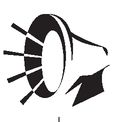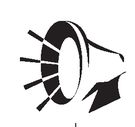Chapter 21
Home Equity Lines of Credit, Second Mortgages, and Refinancing Mania
In This Chapter
• Tapping home equity for additional cash
• Serial refinancing grows more popular
• The hidden costs of no-cost refinancing
• When a second mortgage makes sense
As housing prices rise, owners are looking to take advantage of the equity in their homes. Refinancing, once advised only if interest rates dropped a full two percent, now has become routine with much more minor rate reductions. A home equity line of credit (HELOC) is now used for many purposes. As we discussed in Chapter 15, a HELOC is sometimes utilized as a piggyback loan in order to increase a buyer’s down payment and avoid private mortgage insurance. Other owners take out a HELOC to help pay for big-ticket items like home repairs or their offspring’s college tuition bills. Second mortgages are a more traditional route of an owner getting additional funds.
And you, the mortgage broker, are at the core of all this financial rearranging. You will earn commissions on all of these deals. Your goal is to help the client find the one that meets his needs. And this chapter will help you understand these different types of financing options.
When to Refinance
Like much of life, the decision to refinance is often a mix of solid financial analysis and gut instinct. Sure there are clear calls. Mortgage rates were skyrocketing when the owner bought his home and have now returned to earth and are at least two percentage points lower. For sure, sign up to get a new mortgage.
def·i·ni·tion
Mortgage refinancing is the process of replacing the current loan with a new loan at a lower interest rate and/or better terms.
But there are less clear-cut cases. For example, what do you advise your client when the rates have gone down only one point? You know they need to factor in closing costs, and that the long-term savings aren’t as significant. The decision may still be to refinance. For some clients, lower monthly payments are worth it, even if they are actually paying more in interest in the long run. For those who are in a cash flow crunch, it’s worth it to sacrifice the long-term for the short-term improvement of a lower monthly payment.
Here are other circumstances when refinancing makes sense:
• The owner has built up the equity in his home and now wants to take some of it out.
• The owner has a subprime mortgage with a high interest rate (see Chapter 18). After a few years, he has established a good credit rating and is looking to refinance to get a lower rate with a traditional mortgage.
• The owner has an ARM, rates have gone down, and he wants to lock into a fixed rate mortgage.
• The owner wants to either reduce his monthly payments by lengthening the term of his mortgage, switching from a 15-year fixed rate to a 30-year fixed rate or wants to accelerate paying off his mortgage by switching from a longer- to a shorter-term mortgage.
The traditional rule of waiting for rates to drop precipitously was based on the expense of refinancing. You had to put so much money up front that the real savings from refinancing were much reduced. Even though the monthly payments were smaller, a more accurate analysis should have included an amortization of the closing costs. But now with the popularity of low-cost and no-cost refinancing loan products, owners are more inclined to take advantage of much smaller dips in the interest rate roller coaster.
But as I’ve said repeatedly, there is no free ride in the mortgage business. As we’ll see in the section on low-cost and no-cost refinancing deals, the owner pays for the privilege of minimal closing costs with a higher interest rate. That may be worth it, but you need to be clear with the client about what the deal really costs.

Heads Up!
I have a quick trick to determine if refinancing makes sense. Ask your client to compare his current mortgage payment with a refinanced mortgage payment (that includes all closing costs). If the new payment is lower, he’s saving money from day one and it’s worth it.
Advise your clients that a decision to refinance should be based on several factors:
• How long he plans to remain in the home
• How much equity he has in the home
• How much lower the new payment will be and whether he has to pay points in order to get it
• The closing costs involved
• The actual savings if all costs are included
The tax implications of paying for points vary depending on whether it’s an original mortgage, a refinance, or a second (or more) refinance of the same property. The points for the original mortgage can be deducted in full in the year the house is purchased; points paid to refinance are amortized over the life of the loan; when a property is refinanced a second (or more) time, the balance remaining on the points from the first refinance can be deducted in full, and the points paid for the second refinance are then amortized. Advise clients to check with a tax professional. Depending on the borrower’s tax bracket, the savings from the deductions may be seen as offsetting the refinancing costs.

Heads Up!
Here’s another quick (simplified) rule of thumb for calculating if a refinance is worth it. Will the amount the borrower saves in his monthly payments equal the refinancing costs within 30 months?
The Closing Cost Challenge
Clients need to consider the settlement costs of refinancing when deciding if it makes sense financially to proceed. While low-cost and no-cost loan products are heavily promoted, we know that the charges have actually been rolled into the slightly higher interest rate that the borrower is willing to pay. And that may be worth it to your client in order to avoid having to pay any money up front to close the loan. For example, for a $200,000 refinance loan, aim to keep the increase to about a quarter percent in rate. You should get an even better rate for a bigger loan.
Remember: when the mortgage is inflated to pay closing costs, the borrower is, in effect, paying interest on those costs for the life of the loan. For example, if the borrower rolls the $8000 closing costs of a $200,000 mortgage into the loan, now making it a $208,000 loan, it will take him almost three years of payments to reduce the principal to $200,000. Plus, for the life of the loan, his yearly payments will remain $545 higher than if he had borrowed only $200,000, even though he has, in effect, paid off the “$8,000 closing costs.”
Cutting Closing Costs
There are other ways that the client might be able to reduce his closing costs.
The lender of a refinance deal may be willing to reuse the last home appraisal, or have the appraisal or title re-certified (for a lower cost than getting a new one), if it’s the same institution that holds the original mortgage.
Do Points Make Sense?
Points to reduce the interest rate generally make sense when the borrower first buys a house. For tax purposes, the points are totally deductible. Furthermore, if he stays in the house at least five years, the owner essentially pays off the cost of the points with the savings from a lower interest rate.
But that premise changes in a refinance scenario, especially one that is hard on the heels of first buying the house. The points in a refinance are not totally deductible, but must be amortized over the life of the loan. But even more troubling is that the points paid for the original mortgage become, in effect, a prepayment penalty. Other than the tax deduction, the savings from the lower interest rate hasn’t yet been realized.
The Serial Refinancer
A new breed of borrower has emerged in the last five years: the serial refinancer. It’s not unusual for homeowners to refinance three, four, five, or more times—and as a mortgage broker, you earn a commission every time a new deal is struck.
Make sure your clients understand all the ramifications and costs of refinancing in their states. For example, in Florida, state documentary stamps and intangibles tax add even more to the expense and may discourage serial refinancing. Costs vary widely from state to state. Some less than reputable brokers and lenders do not abide by the good faith estimates they are required by law to provide their clients. You are always better off being honest with your clients about the charges they will find at closing. Your reputation as a straight shooter is critical to your success as a mortgage broker.
Other points an owner should consider before refinancing:

Did You Know?
Serial refinancing may make sense for your client, but lenders won’t pay you your full fee if you bring them the same client within a short period of time (4 to 12 months, depending on the lender). To collect your full fee, you should either shop the loan to another lender or collect your fee from the borrower.
Point 1. If the owner is refinancing every three years, he’s paying a lot of interest and not much principal.
In the first three years of a mortgage, payments are 85 percent interest. The owner has a minimal amount of equity in the property.
By serially refinancing, the owner is constantly paying off interest without putting a dent in the principal or building up any real equity in the property.
Note: In a 30-year mortgage, it’s not until year 20 that the amount going to repay principal exceeds the amount going to pay interest.
Point 2. Conversely, if the owner has been paying a mortgage for more than seven years, he has paid a chunk of change in interest and by refinancing, he is now about to start the process from square one. Even if interest rates have dropped and his monthly payments are less, the total amount of interest he will have paid on the same house, over the long run, is significantly higher. One way to mitigate that effect is to secure a mortgage for a shorter time frame, for example, 25 years instead of 30. (This is true even if the borrower buys a new house and takes out a new loan.)
Note: Lenders will customize mortgages in five-year increments (20- and 25-year loans are available if requested).

Did You Know?
The Federal Housing Administration, the VA, Fannie Mae, and Freddie Mac all have streamlined procedures to reduce settlement costs for a borrower who frefinances with the same lender. It also should reduce the hassle factor. However, these procedures are only applicable for a refinance that does not generate cashout for the owner at closing.
Cashing Out in a Refinance
Some clients will want to cash out when they do a refinance. That’s when the owner borrows additional funds beyond the mortgage loan. For example, if a home is appraised at $100,000, and the owner’s outstanding loan is $60,000, he could refinance at an 80 percent cash-out. His new mortgage would be $80,000, of which he will use $60,000 to pay off the original mortgage, and can use the remaining $20,000 to pay off other debts, make home improvements, pay for college tuition, and so on. His new mortgage is $80,000.
def·i·ni·tion
To cash out in a refinance is to take a larger mortgage than the outstanding debt in order to get funds that can be used for other purposes such as home improvement, reducing credit card debt, paying for big-ticket items, and the like.
A no cash-out mortgage means no additional funds are borrowed above the balance of the debt and nonrecurrent closing costs. A limited cash out means that the closing costs are refinanced in the loan amount based on the borrower’s home equity and a limited amount of additional money can be taken out, up to 2 percent.
A no cash-out mortgage allows the borrower to pay off the mortgage and all nonrecurring closing costs such as attorney fees, survey, and appraisal; a limited cash out refers to a scenario in which closing costs are refinanced in the loan amount based on the borrower’s home equity. The refinanced mortgage can include the balance of the loan, settlement costs, and 2 percent of the new loan amount or $2,000, whichever is less, on top of all that.
Let’s take a different scenario. A homeowner has a first mortgage and a second mortgage on his home. The second mortgage was not used to buy the house, but taken out a few years later. He now wants to refinance and pay off the second mortgage as part of the deal. According to Fannie Mae regulations, any refinance that includes a refinance of a second mortgage not used to buy the property will be considered a cash-out mortgage. Fannie Mae will permit a limited cash-out refinance mortgage to pay off the outstanding principal balance of any second mortgage provided it was used in whole to buy the property. However, if it’s a seasoned loan, one that’s at least 12 months old, even if it was taken out after the home is bought, it can be paid off as part of a no cash-out deal.
A smart use of a cash out is to pay off higher-rate loans. For example, use the cash out from a 5.5 percent mortgage to get rid of a car loan that has a rate of 10 percent or credit card debt that charges 14 percent. But suggest to your clients that they apply their former monthly car or credit card payments to their home equity loan so they reduce that loan as quickly as possible. Otherwise, they’ll be paying off a car over 30 years, instead of the original 5 years of the auto loan.

Heads Up!
A homeowner can refinance an FHA loan to obtain a lower interest rate, but only for the current loan balance. The only exception is if the owner has built up sufficient equity in the home, he may use that equity to finance the closing costs. If an owner wants to cash out, however, he must refinance with a conventional mortgage.
Home Equity Loans
Using a home as collateral to secure a loan to pay for big-ticket items or pay down debt has become a common method of personal finance. A homeowner can secure a home equity line of credit (HELOC) or a standard home equity loan, also known as a term loan, a closed-end loan, or a second mortgage. With either type, it’s another lien on the property. You can help your clients determine which is the better option.
def·i·ni·tion
Home equity line of credit (HELOC) is a revolving credit line using the home as collateral. A standard home equity loan is for a specified amount of money, loaned in a lump sum, for a specified period of time, using the home as collateral.
Home Equity Line of Credit
In Chapter 15 we talked about piggyback loans as a way to up the down payment on a home by getting a line of credit at the time of purchase. As I pointed out, I advise my clients to get a home equity line of credit at that time whether they intend to use it or not since all the paperwork is already completed.

Heads Up!
Some banks will charge a penalty if the borrower prepays the line of credit before a set period of time, usually one to three years. Make sure you inform your clients.
A HELOC uses the home as collateral for the loan. So if the client is delinquent in payment, his house is at risk. The interest rates are variable and usually tied to the prime rate.
With the prime rate rising in the last year, lenders are seeing an increase in the number of borrowers who are refinancing their first-lien mortgages in order to cash out and pay down the home equity lines of credit whose rates are higher than the rates of 30-year fixed rate mortgages.
The Inner Workings of a HELOC
A home equity line of credit requires much of the same documentation as a first-lien mortgage—which is why I suggest to clients that they apply for one when buying a home.
The requirements of a HELOC include:
• property appraisal
• income and asset information
• copy of deed
• title search
• some HELOCs may have yearly membership or maintenance fees
• there may be a minimum draw
The HELOC is for a specific amount of credit, usually based on a percentage of the appraised value of the home minus the balance owed on the existing loan, also known as loan-to-value, LTV.
For example: the original mortgage is an $80,000 loan on a $100,000 house. That means it has an 80 percent LTV. If there is a $10,000 second mortgage on that same house, it has a combined loan-to-value, CLTV, of 90 percent.
For example, let’s assume that a home is appraised at $100,000 and has mortgage debt of $35,000. If the lender sets the percentage at 75 percent, the potential credit line would be $40,000 ($100,000 × .75 = $75,000 - $35,000 = $40,000).
def·i·ni·tion
Loan-to-value, LTV, is the ratio of the fair market value of the house to the loan that will finance its purchase. Combined loan-to-value, CLTV, is the ratio of the fair market value of the house to all the loans on the property.
The line of credit is set for a fixed amount of time (usually 10 years), although some lenders allow the owner to renew the credit line, while others may call for full repayment of any outstanding balance. Others permit repayment over a fixed time. Review carefully the payoff requirements for the HELOC.
HELOCs vary in how the owner can draw the money.
• Some plans require the owner to borrow a minimum amount each time the line of credit is used. For example, the plan may require that each withdrawal be a minimum of $300.
• Some plans require a minimum amount outstanding.
• Some lenders require the borrower to take an initial draw when the HELOC is first established.
HELOC Rates
HELOC rates are tied to a publicly available index, such as the prime rate or a U.S. Treasury bill, plus a margin set by the lender. As the index changes, the HELOC rate changes. Some lenders will advertise a “loss leader,” a temporarily discounted rate that is unusually low and lasts for a limited period.
HELOC rates have a cap on how high the rate can rise over the life of the plan. They may also have a payment cap to limit the increase in payments even as interest rates rise. However, many HELOCs permit the lender to freeze or reduce the credit line if the interest rate reaches the cap. Conversely, some plans have a limit on how low the interest rate may fall if the index drops.
Payback Time
Review with your clients the repayment requirements of their HELOC since the repayment schedules differ among plans.
• Some HELOCs set minimum payments that cover some principal plus accrued interest. However, unlike a typical installment loan, the amount of principal paid over the course of the loan is not enough to have repaid the debt at the end of the term.
• Some HELOCs allow interest-only payments during the term of the loan, with the full principal due when the plan ends.
• If there is a balloon payment at the end of the term, the borrower can refinance with the lender or with another lender.
Since the interest rate is variable, monthly payments may change. For example, say an owner borrows $10,000 of his HELOC under a plan that calls for interest-only payments. If the initial rate was 10 percent, he would pay $83 a month. But if the rate rose to 15 percent, his monthly payments would be $125.

Heads Up!
If your client intends to lease his home, make sure he checks the HELOC agreement. Some plans prohibit leasing the home.
Some HELOCs permit keeping payments level throughout the plan. But as with everything else, there’s no free ride. When the loan is due, the lender will expect a full repayment of principal and any outstanding interest.
Second Mortgages
Instead of the now more common line of credit, some owners still prefer to borrow the more traditional home equity or second mortgage loan. Although the home is still used as collateral, the payment schedule calls for equal payments over the life of the loan, at the end of which the entire loan is paid off.
Owners may choose this type of loan if they need a specific amount of money for a specific purpose; for example, putting on an addition to their home.
The interest on second mortgages (and a HELOC) can be deductible as long as the total for the home loans and mortgages is for $1 million or less, and is not for more than two residences. Advise your clients to check with a tax professional.

Heads Up!
It’s apples and oranges when comparing APR rates for a traditional mortgage loan and a home equity line of credit. The APR of the traditional mortgage includes the interest rate plus points and other finance charges. The APR of a home equity line is based solely on the period interest rate.
The Least You Need to Know
• A cash-out refinancing allows owners to tap into the equity of their homes.
• Fannie Mae, Freddie Mac, VA, and FHA loans prohibit cash-out refinancing, except for a small amount to cover closing costs if the owner has sufficient equity in the property.
• A home equity line of credit has a variable interest rate that is tied to an index, such as the prime rate.
• Advise clients to simultaneously apply for a HELOC when purchasing a home, even if they don’t intend to draw on it at the time, since all the paperwork is already complete.
..................Content has been hidden....................
You can't read the all page of ebook, please click here login for view all page.
